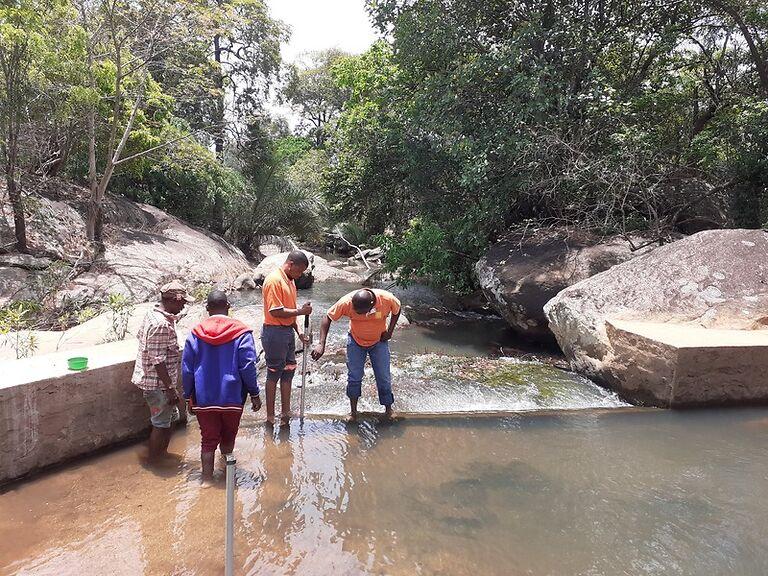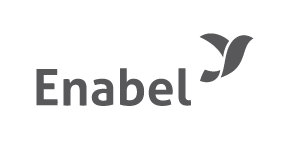From water to energy: Digitalization and innovation go hand in hand in developing hydropower in Mozambique
By: RERD2
Energia para
todos (Energy for All)
The Mozambican
government’s ambition is clear: Energia para todos. By 2030, all
Mozambican households should have access to sustainable and affordable
electricity. In 2019, however, the counter stood at only 29.6%. Mozambique,
therefore, faces an enormous challenge. The country has a considerable potential
for renewable energy, with significant prospects for hydroelectric and solar
power. The north of Mozambique in particular has several rivers with great
potential for electricity production. At the same time this is also the region
where the population has the least access to electricity. "A match made in
heaven". But why is the number of hydropower plants in Mozambique still so
limited?
Complexity
The reason is
simple: hydropower projects excel in their complexity. They are projects in
which different disciplines and specialisations come together: hydrology, civil
works, electromechanics, environmental management and so on. Moreover, building
a hydropower plant requires considerable financial resources. Hydropower projects,
therefore, are by nature not "a walk in the park". In Mozambique,
there are some additional specific challenges. There is a lack of recent
measurement data of the rivers and their surroundings. Potential sites are
often difficult to reach in this vast country. Financial resources from
government are limited, and there is little experience in developing projects
with the private sector.
FUNAE
FUNAE, the
National Energy Fund in Mozambique, is responsible for facilitating and
realizing ‘off-grid’ energy projects, i.e. outside the national electricity
network. FUNAE and Enabel have been working together for more than 10 years on
the development of renewable energy projects in Mozambique, both in the field
of solar energy and hydropower. Within the framework of the “Renewable Energy
for Rural Development, Phase 2 (RERD2)” program, Enabel and FUNAE are jointly
seeking solutions to best study the feasibility of hydropower projects, with a
clear focus on digitalization and new methods. This approach already resulted in
3 clear innovative ways of working.
Solution 1: GIS
"This was
a very valuable training," commented engineer Norberto Novelo after the
intensive training on using geographical information systems (GIS) to analyse
new potential locations for hydropower. Enabel and FUNAE jointly developed a
methodology to investigate new sites involving historical river data,
correlation analysis, freely available geographical data and Excel templates. Concrete key parameters, such as catchment
area, river flow and power output, can be calculated and visualised using these
techniques. The great added value is especially that the
methodology allows to identify the most interesting sites remotely and in
advance, i.e. from the desktop, so that FUNAE can make the best use of its
limited financial resources. With this
new method, five new sites were recently analysed, of which one with a
particularly high potential.
Solution 2: Drone
After selecting
the potential sites, the initial analysis needs to be verified in the field
through measurements and fieldwork. However, hydropower projects can involve
huge areas, up to several km2, often difficult to access. Here too,
technology and digitalisation offer a solution. The entire area can be mapped
in detail from a safe location by using a drone. Moreover, using a drone, a
very detailed digital elevation model of the area can be built, which is
particularly valuable during the hydropower plant design. This approach was tested
in Nintulo as part of a training program and will be increasingly used in the
next couple of years.
Solution 3: River
flow measurements with community involvement
One of the most
critical parameters for a hydropower project is the available river flow. One
of the biggest problems in Mozambique is the lack of up-to-date measurement
data, so these have to be collected in the field. But how do you start? In
Nintulo in Zambézia province, Enabel and FUNAE have found a great solution.
Together with the local community, a small dam was built in 2019 to allow
measurement of the river flow and water levels. Since then, every day, someone
from the community walks up the hill to measure the water level. These daily
water levels are meticulously recorded in a notebook and the data is shared
monthly in a WhatsApp group with FUNAE and Enabel members. Subsequently Enabel
and FUNAE, with the support of the community, carry out monthly control
measurements. The community also
guarantees the maintenance of the access roads to the river so that the
measurement sites remain easily accessible.
Through this
approach, FUNAE and Enabel have already been able to collect measurement data
for the past two years. But there is more. The active involvement of the
community of Nintulo in the whole process ensures that there is substantial
local support for the project. The contacts between FUNAE, Enabel and the
community of Nintulo are particularly close, and the use of the common WhatsApp
group also ensures that any problems are addressed immediately.
Or, as the "chefe
de posto", Senhor Renato, repeatedly says, "this project is
extremely important for the further development of our community,
Nintulo".
What's next?
After the
technical elaboration of a hydropower project, financing must be sought. In the
past, energy projects were the exclusive responsibility of the Mozambican
government. But in 2021, also due to the influence of FUNAE, the legislation
changed so that private funds can also be used for renewable energy projects. In
anticipation of further regulations, Enabel and FUNAE are already working
together to develop new financing and management models for energy
installations enabled by FUNAE. Because, after all, the end goal is very clear:
Energia para Todos.
Key data
- 29.6% of the Mozambican population of 32 million had access to electricity in 2019
- Enabel and FUNAE have been working together since 2011
- More than 2 years of river flow measurements in Nintulo
- 5 new hydropower sites analysed, of which one identified as high potential
- Digital elevation model obtained from Nintulo area by using drone
Latest news from this project
No news

